di Sergio Fanti
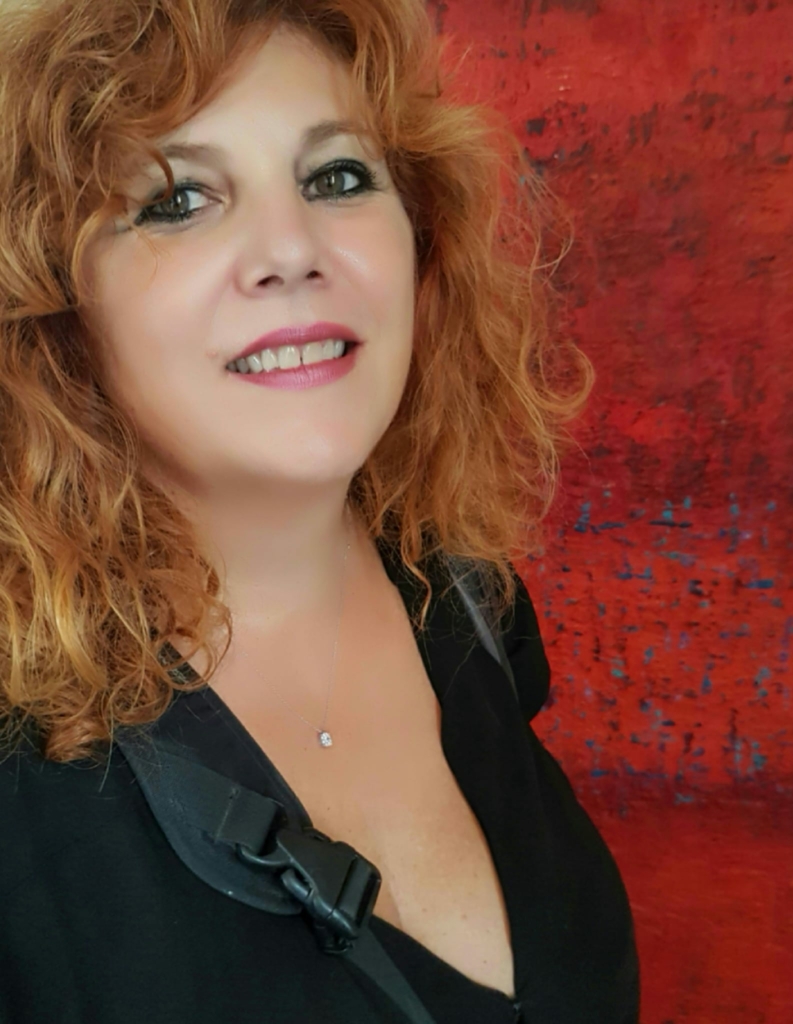
Emiliana, dinamica, comunicativa, appassionata del buon vivere e di tutto ciò che rende la vita un viaggio divertente e appassionante, Paola D’Antuono mostra fin da giovane una particolare predilezione per tutti gli ambiti culturali e artistici, come il teatro e la fotografia fino ad arrivare alla pittura, la sua strada, quella che intraprende nel 2003 e che non abbandonerà più. Sensibile e attenta osservatrice della realtà intorno a sé non può non notare il grigio che avvolge le periferie urbane, quei luoghi spesso dimenticati perché ritenuti semplici dormitori lontani dalla vivacità dei centri cittadini, decidendo così di raccontare un mondo più colorato, vivace, dentro cui è bello perdersi proprio in virtù di quel cromatismo appartenente alla sfera interiore ed emozionale e in grado di modificare completamente il punto di vista sui vari aspetti della quotidianità. La morbidezza dell’approccio pittorico della D’Antuono, stilisticamente appartenente all’Espressionismo Astratto, si accompagna all’utilizzo di uno strumento apparentemente più rigido, la spatola, che però grazie alla sua abilità esecutiva riesce a dare un risultato evanescente, quasi sognante tanto quanto le tonalità che predilige. Dunque nel suo caso lo stile diventa non tanto irruento e impulsivo come quello di Jackson Pollock bensì più meditativo, più vicino all’intenzione pittorica di Mark Rothko in virtù della quale riesce a trasportare l’osservatore in un mondo sospeso tra reale e immaginario, in una dimensione in cui il sogno si accompagna alla necessità di rendere la realtà quotidiana più piacevole, meno ombrosa, meno cupa di quanto a uno sguardo distratto possa apparire. Ecco dunque che il compito dell’artista è quello di scendere in profondità, di andare a esplorare quei particolari, quei dettagli, quelle voci confuse nel rumore che costituiscono un universo meraviglioso attraverso cui è possibile vivere con maggiore intensità ogni episodio, ogni giorno apparentemente uguale al precedente e al successivo ma in realtà pieno di tutti quei colori che l’essere umano dimentica a causa della fretta di consumare le ore correndo dietro agli impegni e alle cose da fare. L’invito della D’Antuono è quello di fermarsi ad ascoltare, di andare oltre il visibile per scorgere, oltre la coltre del grigiore, tutta quella gamma cromatica che appartiene all’essenza della realtà e che può essere percepita solo liberando l’emozione, il sentire interiore che funge da collegamento tra oggettività e significato, tra atteggiamento rassegnato alle pieghe del vivere e vivacità positiva che permette di osservare tutto da un punto di vista più sfaccettato, caleidoscopico, travolgente e decisamente più piacevole. La tela Il giardino incantato 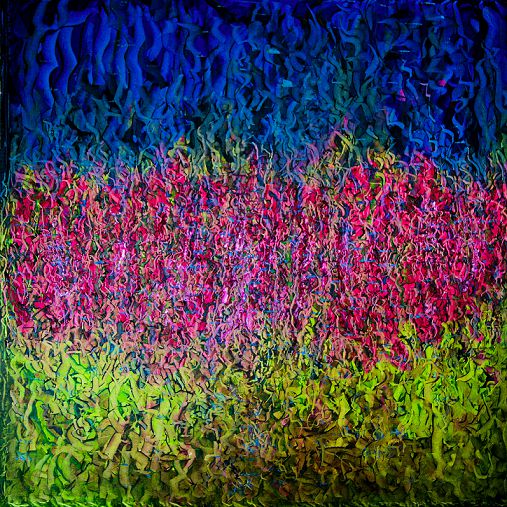 Il giardino incantato
Il giardino incantato
è infatti metafora di questo tipo di approccio, racconta di un modo fanciullesco di vivere la quotidianità e ciò che appartiene alla natura, intesa come linfa vitale, che può permettere all’individuo di trasformare anche il dettaglio più noioso e scontato in un’avventura piacevole e divertente perché è in fondo tutto ciò di cui ha bisogno l’essere umano, mantenere quel lato bambino attraverso cui meravigliarsi, gioire, entusiasmarsi anche per le piccole cose che il mondo di tutti i giorni offre allo sguardo. In DinamicaMente

la gamma cromatica è giocata sui toni del rosa intenso e del fucsia perché è quello il modo in cui la D’Antuono vive la sua vita, con passione emotiva, dunque intesa nel senso più poetico del termine, che le permette di trovare il lato positivo, la capacità di lasciarsi trasportare dalle sensazioni più piacevoli esortando perciò l’osservatore a seguire la medesima direzione, quella strada in grado di fare la differenza tra la piattezza e l’uniformità di una quotidianità a cui spesso soccombe e il prendere invece ogni giorno come quello in cui qualcosa di meraviglioso può accadere, in cui tutto può modificare il suo percorso perché le opportunità possono essere intraviste e raggiunte solo se si sa guardare oltre l’apparente immobilità. Andiamo ora a conoscere meglio questa dinamica artista.
Paola, lei ha cominciato a dipingere nel 2003, ha effettuato studi specifici oppure il suo è stato un istinto, un impulso espressivo che non ha potuto fare a meno di seguire?
Io ho svolto studi umanistici, sono sempre stata appassionata d’arte e di fotografia, ma non ho mai fatto studi specifici o corsi. Il mio è stato un impulso espressivo, ho iniziato col figurativo, ma mi sono accorta subito che la cosa più importante per me, non era il segno in sé, ma il colore. Ho iniziato quindi a sperimentare e a dipingere ciò che mi circondava e mi creava grande disagio, lo skyline delle ceramiche di Sassuolo e Fiorano, i capannoni industriali, che pian piano nelle mie opere si sono trasfigurati grazie a colori vivaci e terapeutici in paesaggi marini, in giardini incantati o paesaggi estivi. Il colore diventa una via di fuga salvifica e l’uso della spatola il mezzo per esprimere le mie emozioni. La mia è una pittura che nasce come una sorta di arteterapia.
La base della sua ricerca pittorica è quella dell’anonimato delle periferie cittadine, un po’ alla maniera della Street Art in cui sono i muri dei palazzi o dei ponti a essere ravvivati; differentemente dai murales lei opera sulla tela, inoltre il suo messaggio non è di denuncia bensì di esortazione. Vuole approfondire le tematiche e raccontare cosa che desidera giunga all’osservatore? Il mio messaggio è di forte positività e di speranza, penso che con l’arte e la forza del colore, si possa trasformare la realtà anche più grigia in una realtà più umana, dove si può ritrovare l’armonia che abitualmente ci regala la natura non contaminata dalla distruttività dell’uomo.
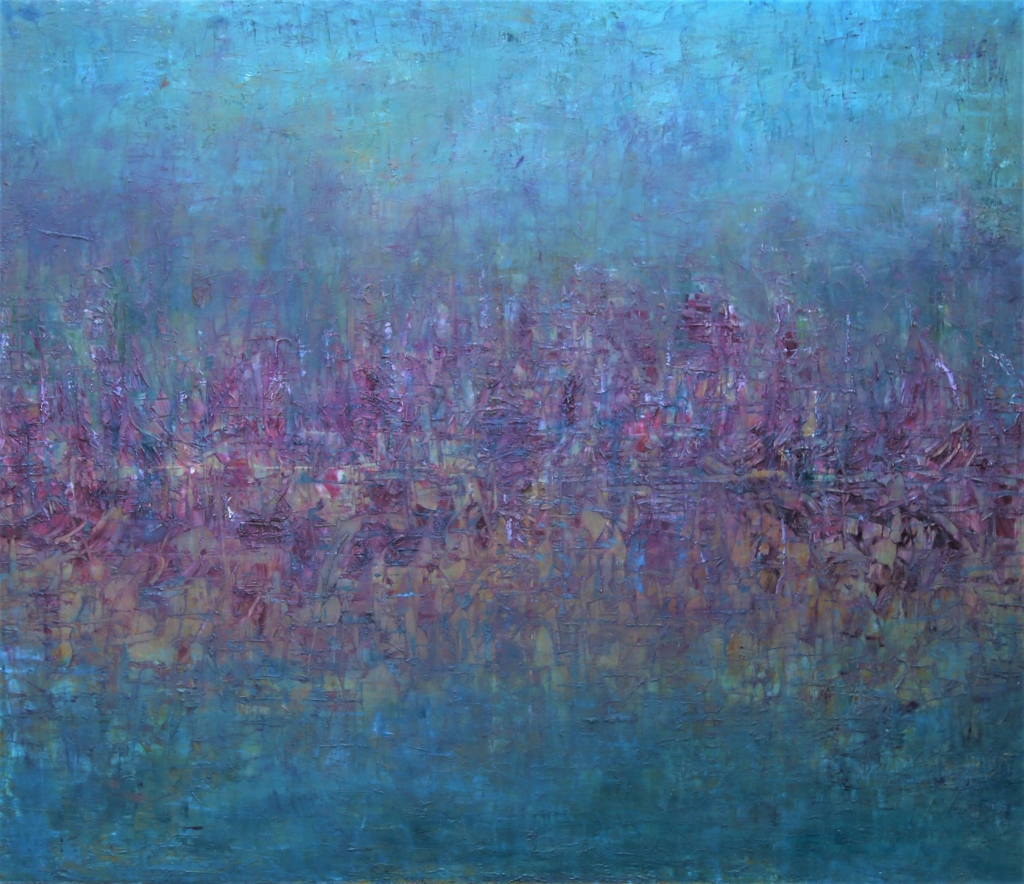
Evanescenze floreali
Nelle sue opere appaiono spesso legacci, cordoni che si intrecciano tra loro attraverso la similitudine e la continuità cromatica pur apparendo come entità distinte le une dalle altre. Ci spiega meglio cosa rappresentano questi intrecci pittorici?
Questa rimane la nota dolente, la forte positività di cui parlavo prima viene mitigata da questi intrecci e legacci sempre presenti nelle mie opere. Nati dalle line perpendicolari del paesaggio industriale, sono rimasti a ricordare che la nostra libertà, anche se supportata dalla via di fuga del colore, non è mai assoluta bensì costretta dentro schemi, condizionamenti che spesso non avvertiamo, ma da cui non è facile liberarsi. E’ un cammino lento di autoconsapevolezza. Accanto alle opere nelle quali rappresento il paesaggio urbano purificato dal colore vi sono altre opere, caratterizzate da linee più sinuose nelle quali è presente l’intento di approfondire la sfera psicologica umana, indagando l’io più intimo e inaccessibile, ed esprimere le pulsioni più profonde che ci caratterizzano e che spesso sono tra loro contrastanti. Un esempio di questo sono le tele Gli abissi dell’anima del 2019 e L’inconscio del 2019.
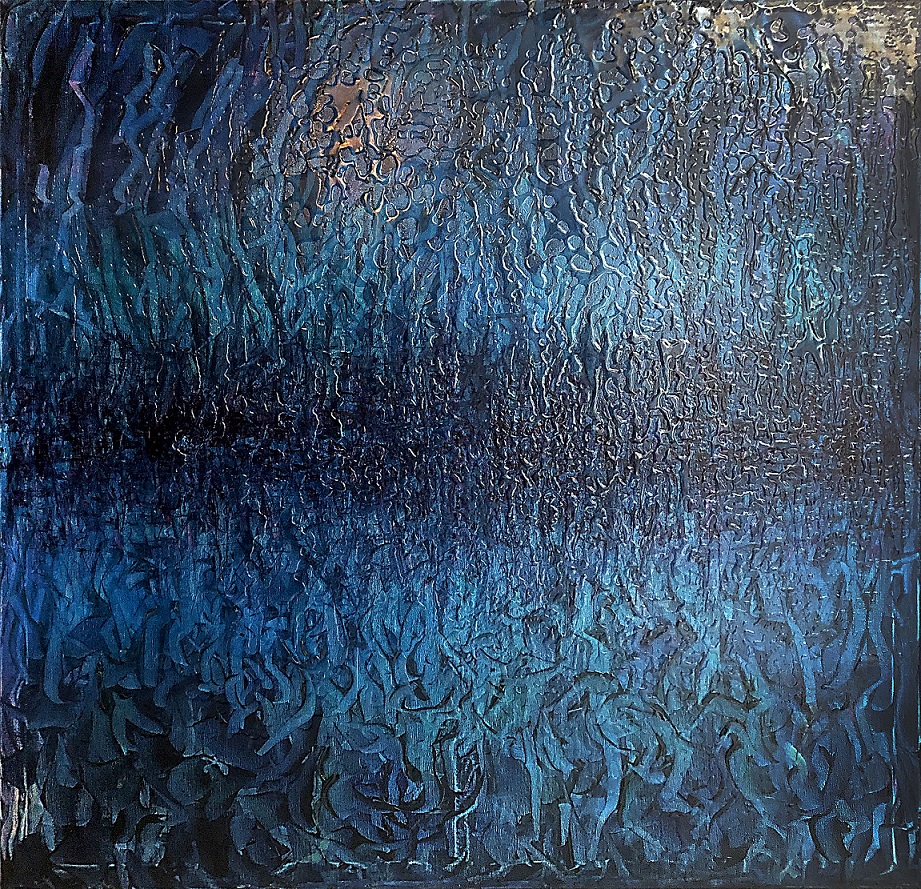
Lei ha uno stile al contempo lirico, suggestivo, ma anche vivace e trascinante in cui il colore domina su qualsiasi altra realtà, osservata o semplicemente immaginata. Ci sono maestri del passato che l’hanno ispirata o a cui si sente più vicina per intento espressivo?
A ispirarmi sono state la realtà e le emozioni, ho sempre cercato di seguire una mia strada, pur essendo consapevole che nell’arte ormai tutto è stato rappresentato. Sono tuttavia altrettanto consapevole che forme espressive analoghe alle mie sono probabilmente hanno alle base emozioni diverse. Sono vicina, come ha già sottolineato lei, all’Espressionismo Astratto del grande maestro Mark Rothko, ma anche all’Impressionismo che vira all’astrazione dell’ultimo Monet.
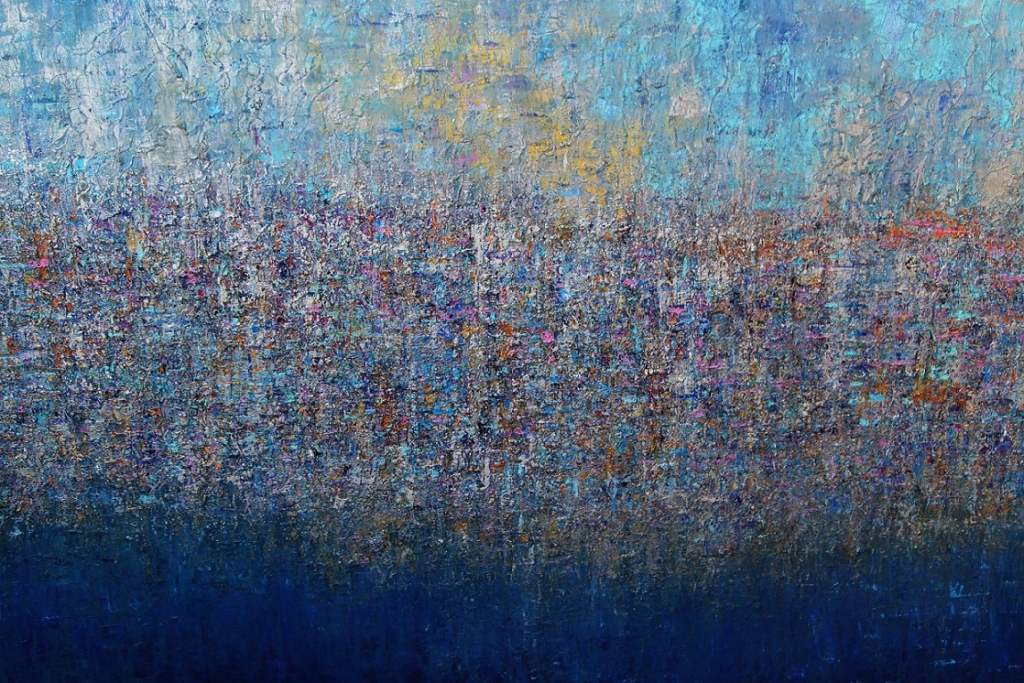
Ha all’attivo moltissime mostre collettive, anche di grande rilevanza, e diverse personali, oltre ad avere il privilegio di vedere pubblicate le sue opere sull’Atlante dell’Arte Contemporanea De Agostini, sull’Enciclopedia dell’Arte Italiana e sull’Annuario dell’Arte Italiana, tutti del 2021. Ci racconta i suoi prossimi progetti?
A breve, il 23 aprile esporrò in una Mostra di arte contemporanea a Portofino presso il Castello Brown organizzata dal Maco Museum e a Genova presso Satura Arte in concomitanza ad Euroflora. A maggio sono stata seleziona per esporre alla Biennale di Varallo, in provincia di Vercelli, e presso la Galleria Ravenna Art Gallery di Ravenna. In luglio sarò invece a Cosenza al Museo delle arti e dei mestieri MAM, per una retrospettiva sull’arte contemporanea.
Un progetto che ho appena terminato e mi ha dato molta soddisfazione è quello della trasposizione di alcune delle mie opere in foulards, che ho presentato le scorse settimane a Sassuolo, provincia di Modena, in un connubio tra arte e moda.
PAOLA D’ANTUONO-CONTATTI Email: dapaol65@gmail.com Sito web: www.paoladantuono.it Instagram: https://www.instagram.com/paola.dantuono.3/
Facebook: https://www.facebook.com/paola.dantuono.3
Marta Lock’s interviews:
Paola D’Antuono, the artistic eclecticism that finds its fulfilment in painting
Emilian, dynamic, communicative, passionate about good living and everything that makes life an enjoyable and exciting journey, Paola D’Antuono has shown a particular predilection for all cultural and artistic fields since she was young, such as theatre and photography, until she came to painting, her chosen path, the one she took in 2003 and which she will never abandon. Sensitive and careful observer of the reality around her, she cannot fail to notice the greyness that envelops the urban peripheries, those places often forgotten because they are considered simple dormitories far from the liveliness of the city centres, thus deciding to tell a more colourful, lively world, within which it is nice to get lost precisely because of that chromatism belonging to the inner and emotional sphere and able to completely change the point of view on the various aspects of everyday life. The softness of D’Antuono’s pictorial approach, stylistically belonging to Abstract Expressionism, is accompanied by the use of an apparently more rigid instrument, the spatula, which, however, thanks to her executive ability, succeeds in giving an evanescent result, almost as dreamy as the tones she prefers. In his case, therefore, her style is not as impetuous and impulsive as Jackson Pollock’s, but more meditative, closer to Mark Rothko’s pictorial intentions, by virtue of which she succeeds in transporting the observer into a world suspended between the real and the imaginary, into a dimension in which dreaming is accompanied by the need to make everyday reality more pleasant, less shadowy, less gloomy than it might appear at a distracted glance. So the artist’s task is to go deep down, to explore those details, those voices confused in the noise that make up a wonderful universe through which it is possible to live each episode with greater intensity, each day apparently the same as the previous and the next but in reality full of all those colours that the human being forgets because of the haste to consume the hours running after commitments and things to do. D’Antuono’s invitation is to stop and listen, to go beyond the visible to glimpse, beyond the blanket of greyness, the whole range of colours that belong to the essence of reality and that can only be perceived by freeing emotion, the inner feeling that acts as a link between objectivity and meaning, between an attitude resigned to the folds of life and positive vivacity that allows us to observe everything from a more multifaceted, kaleidoscopic, overwhelming and decidedly more pleasant point of view. The canvas Il giardino incantato (The Enchanted Garden) is in fact a metaphor for this type of approach, telling of a childlike way of experiencing everyday life and that which belongs to nature, understood as the lifeblood, which can allow the individual to transform even the most boring and predictable detail into a pleasant and entertaining adventure, because that is basically all that the human being needs, to maintain that childlike side through which to marvel, rejoice and get excited even about the small things that the everyday world offers to the eye. In Dinamicamente (Dynamically) the chromatic range is played out in shades of intense pink and fuchsia because that is the way D’Antuono lives her life, with emotional passion, therefore intended in the most poetic sense of the term, which allows her to find the positive side, the ability to let herself be carried away by the most pleasant sensations, thus urging the observer to follow the same direction, that path capable of making the difference between the flatness and uniformity of a daily routine to which it often succumbs and instead taking each day as one in which something wonderful can happen, in which everything can change its course because opportunities can only be glimpsed and reached if one knows how to look beyond the apparent immobility. Let us now get to know this dynamic artist better.
Paola, you started painting in 2003, did you undertake any specific studies or was it an instinct, an expressive impulse that you could not help but follow?
I followed humanistic studie, I have always been passionate about art and photography, but I have never done any specific studies or courses. Mine was an expressive impulse, I started with figurative art, but I soon realised that the most important thing for me was not the sign itself, but the colour. I therefore began to experiment and paint what surrounded me and created great unease, the skyline of the ceramics of Sassuolo and Fiorano, the industrial warehouses, which gradually transfigured in my artworks thanks to bright and therapeutic colours into seascapes, enchanted gardens or summer landscapes. Colour becomes a saving escape route and the use of the spatula the means to express my emotions. My painting is a kind of art therapy.
The basis of your pictorial research is the anonymity of the city suburbs, a bit like Street Art, in which the walls of buildings or bridges are brought to life; unlike murals, you work on canvas, and your message is not one of denunciation but of exhortation. Would you like to elaborate on the themes and tell what you would like to see reach the viewer?
My message is one of strong positivity and hope. I think that through art and the power of colour, even the greyest reality can be transformed into a more human one, where we can rediscover the harmony that nature usually gives us, uncontaminated by man’s destructiveness.
In your artworks you often see ties, cords that are intertwined through similarity and chromatic continuity, even though they appear as separate entities. Can you explain what these pictorial entanglements represent?
This remains the sore point, the strong positivity I mentioned earlier is mitigated by these interweavings and ties that are always present in my works. Born from the perpendicular lines of the industrial landscape, they have stayed as a reminder that our freedom, even if supported by the escape route of colour, is never absolute but rather constricted within patterns, conditioning that we often do not feel, but from which it is not easy to free ourselves. It is a slow journey of self-awareness. Alongside the artworks in which I represent the urban landscape purified by colour, there are others characterised by more sinuous lines in which there is an intention to delve into the human psychological sphere, investigating the most intimate and inaccessible self and expressing the deepest impulses that characterise us and which are often conflicting. Examples of this are the canvases The Abysses of the Soul of 2019 and The Unconscious of 2019.
You have a style that is at once lyrical, evocative, but also lively and enthralling, in which colour dominates over any other reality, whether observed or simply imagined. Are there any masters from the past who have inspired you or to whom you feel closest in terms of expressive intent?
Reality and emotions have inspired me, and I have always tried to follow my own path, even though I am aware that everything in art has now been represented. However, I am also convinced that forms of expression similar to my own are probably based on different emotions. As you have already pointed out, I am close to the Abstract Expressionism of the great master Mark Rothko, but also to the Impressionism that turns to abstraction of the late Monet.
You have had many group exhibitions, some of great importance, and several solo exhibitions, as well as having the privilege of seeing your artworks published in the Atlante dell’Arte Contemporanea De Agostini, the Enciclopedia dell’Arte Italiana and the Annuario dell’Arte Italiana, all in 2021. Can you tell us about your next projects?
Soon, on 23 April, I will be exhibiting in a Contemporary Art Exhibition in Portofino at Castello Brown organised by the Maco Museum and in Genoa at Satura Arte in conjunction with Euroflora. In May, I have been selected to exhibit at the Biennale of Varallo, in the province of Vercelli, and at the Ravenna Art Gallery in Ravenna. In July I will be in Cosenza at the Museo delle arti e dei mestieri MAM, for a retrospective on contemporary art. A project that I have just finished and that has given me great satisfaction is the transposition of some of my artworks into scarves, which I presented last week in Sassuolo, in the province of Modena, in a combination of art and fashion.


